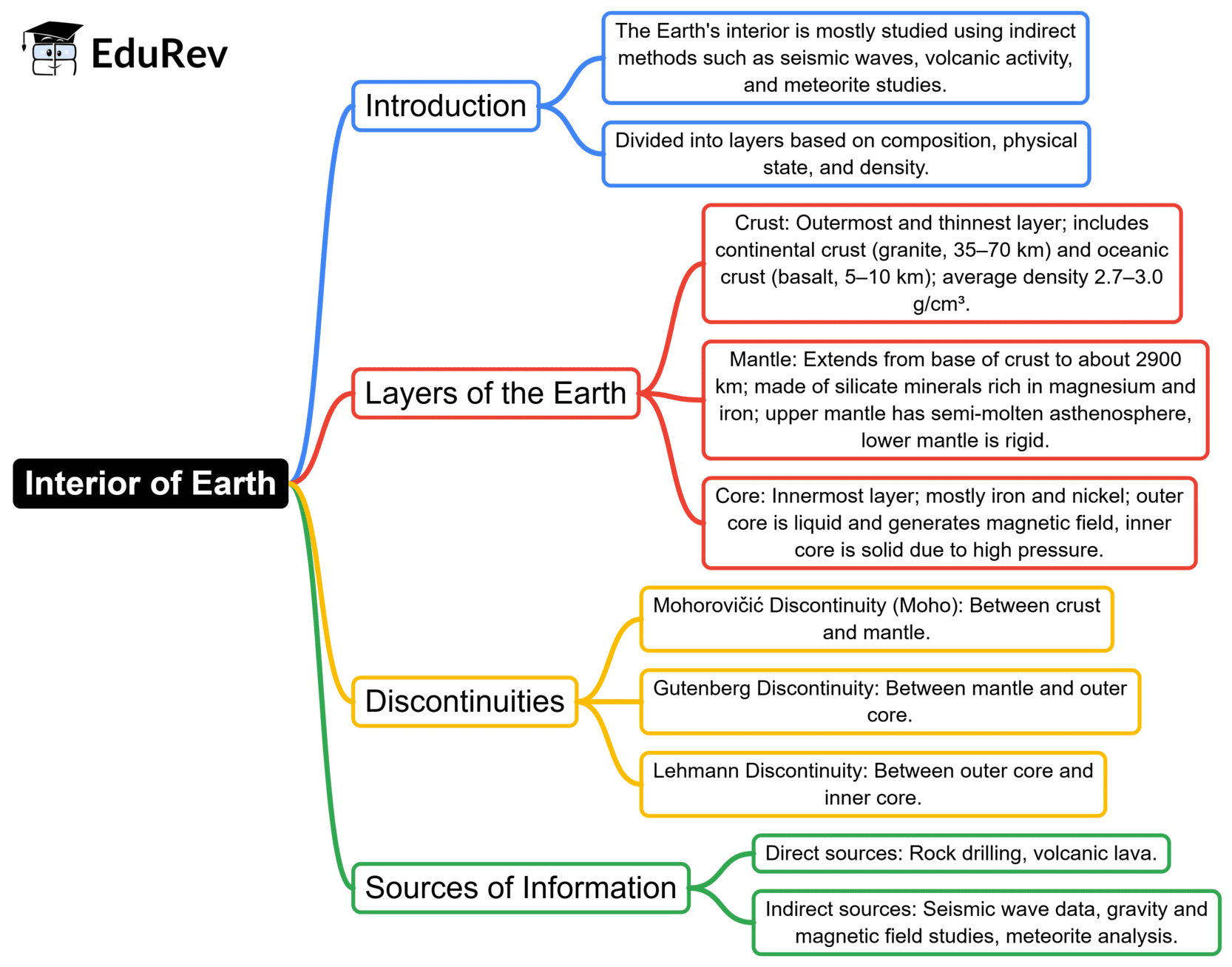UPSC Exam > UPSC Notes > Geography for UPSC CSE > Mind Map: Inside our Earth
Mind Map: Inside our Earth | Geography for UPSC CSE PDF Download

The document Mind Map: Inside our Earth | Geography for UPSC CSE is a part of the UPSC Course Geography for UPSC CSE.
All you need of UPSC at this link: UPSC
|
175 videos|619 docs|192 tests
|
FAQs on Mind Map: Inside our Earth - Geography for UPSC CSE
| 1. What are the layers of the Earth? |  |
Ans. The Earth is composed of four main layers: the inner core, outer core, mantle, and crust. The inner core is a solid ball made mainly of iron and nickel. Surrounding the inner core is the outer core, which is liquid and also consists of iron and nickel. The mantle is the thickest layer and is made up of hot, semi-solid rock. Lastly, the crust is the outermost layer and is composed of solid rock and soil.
| 2. How do scientists study the inside of the Earth? |  |
Ans. Scientists study the inside of the Earth using various methods. One common method is through seismic waves, which are generated by earthquakes or man-made explosions. By analyzing how these waves travel through the Earth's layers, scientists can determine the properties and composition of each layer. They also use drilling samples and volcanic eruptions to gather information about the Earth's interior.
| 3. What is the significance of plate tectonics in understanding the Earth's interior? |  |
Ans. Plate tectonics is crucial in understanding the Earth's interior because it explains the movement and interaction of the Earth's lithospheric plates. These plates are constantly moving and interacting with one another, causing various geological phenomena such as earthquakes, volcanic activity, and the formation of mountains. By studying plate tectonics, scientists can gain insights into the processes occurring within the Earth's interior.
| 4. How is the Earth's magnetic field generated? |  |
Ans. The Earth's magnetic field is generated by the movement of molten iron within the outer core. This movement, known as convection, creates electric currents, which in turn generate a magnetic field. The Earth's rotation also plays a role in shaping the magnetic field. The magnetic field is crucial for protecting the Earth from harmful solar radiation and plays a vital role in navigation for both humans and animals.
| 5. What is the role of the Earth's interior in shaping the surface features? |  |
Ans. The Earth's interior plays a significant role in shaping the surface features through processes such as plate tectonics, volcanic activity, and erosion. Plate tectonics causes the movement and collision of lithospheric plates, leading to the formation of mountains, valleys, and oceanic trenches. Volcanic activity, driven by the movement of magma from the mantle to the surface, creates volcanic mountains and islands. Erosion, caused by the action of wind, water, and ice, further modifies the Earth's surface over time.
Related Searches






















